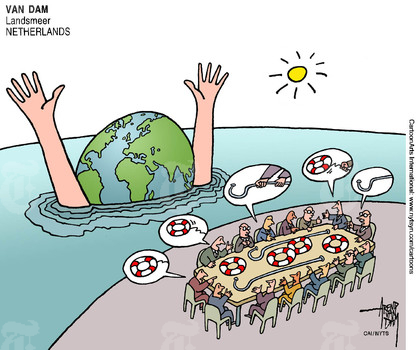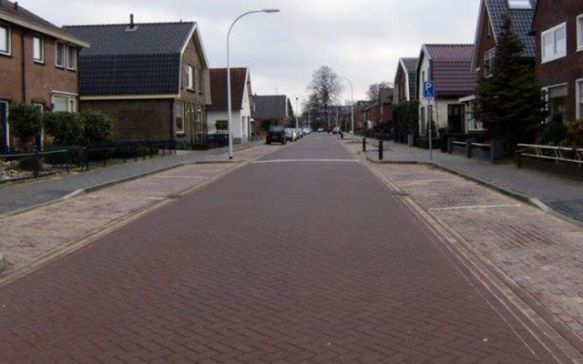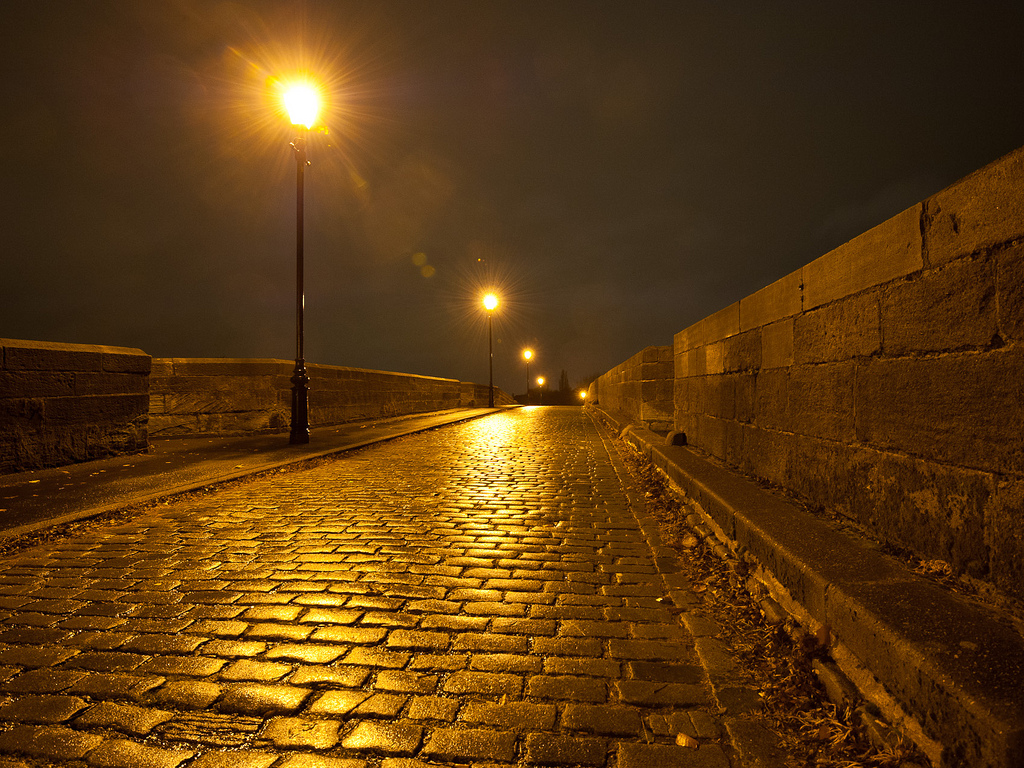Throwback Thursday: Welcome to the Netherlands
On November 21st, 2014, The Sustainable Investor examined The Netherlands' Never Ending Battle With The Sea.The nomenclature Netherlands is Dutch for 'low countries' or 'lowlands' - which is accurate because 1/8 of the country actually exists below sea level. And half of the country lies less than 1 meter above the sea. We have previously discussed the potentially catastrophic sea level rise induced by climate change. You do the math. The country is literally sinking. - The Sustainable Investor, 11-21-2014. Whether the result of an urgency to decelerate the sinking land or a population deeply devoted to advancing sustainable change, or perhaps an entirely different catalyst altogether - the Netherlands is breaking new ground in innovative energy efficiency.WATCH YOUR BACK, DIRTY AIR.What if the solution to air pollution was right in front of us?Or under us, to be exact.
Whether the result of an urgency to decelerate the sinking land or a population deeply devoted to advancing sustainable change, or perhaps an entirely different catalyst altogether - the Netherlands is breaking new ground in innovative energy efficiency.WATCH YOUR BACK, DIRTY AIR.What if the solution to air pollution was right in front of us?Or under us, to be exact. Introducing smog-eating cement.Yes, it exists.Not only does it exist, but smog-eating cement has the potential to eradicate air pollution by nearly 50%.In 2013, Scientists at the University of Technology in Eindhoven furnished a street in Hengelo, Netherlands, with pavement blocks covered in titanium oxide, a photocatalytic chemical that actually extracts pollutants from the air and transforms them into less-harmful substances. As published in an excerpt "Full Scale Demonstration of Air-Purifying Pavement", the titanium oxide cement demonstrated, over the course of a year, the ability to reduce air pollution up to 45% in ideal weather conditions, equating to an average reduction of 19% per day.To be fair, "breaking new ground" is somewhat of an overstatement - this is not the first time titanium dioxide has been presented. In fact, in 2008, Italian company Italcementi's version of titanium dioxide cement was featured in Time Magazine's Best Inventions of 2008. But in 2008, the product was acknowledged with a weary eye.If you are wondering why you haven't seen a smog-eating sidewalk in a city near you, the answer is simple.Cost.Titanium dioxide pavement is far more expensive than the cement in your basement. A sufficient consumer response has not yet been evoked to justify the costs. That being said, today - perhaps the result of a worsening environmental situation - a handful of onlookers are eagerly awaiting future developments.Smog-eating cement has a long way to go before becoming mainstream, but the concept is illustrative of massive opportunity....Imagine if sidewalks could sequester carbon?THE WORLD'S FIRST-EVER SOLAR ROAD:Last November, the Netherlands unleashed an even greater revolution in the world of renewable energy: the first-ever solar bike lane.Built in the town of Krommenie, a 230-foot stretch of land has been covered with conventional solar panels and protected by a centimeter-thick layer of safety glass. The road officially opened for traffic on November 12th, 2014 and has been enjoyed by over 150,000 cyclists to date.The real beauty of the solar road is that the energy generated can be used to power street lamps, traffic lights, households, you name it.As espoused in yesterday's Huffington Post article (among other publications): World's First 'Solar Road' is Generating Even More Power Than Expected, the efficacy of the solar road has far exceeded expectations.Specifically, this road has produced over 3,000 kilowatt hours of energy - roughly equating to enough energy to power a small household for an entire year. The solar road has furthered confidence in consumers and businesses of the massive power of solar energy and current developments are seeking to create solar panels that can withstand heavier traffic.Weight is not the sole issue.There is a stark technological contrast to a solar panel located on the roof of a house and the panel that could line a road.Along with automotive vehicles comes dirt, which reduces translucency, and the need for textured glass that will ensure safety and prevent friction - slipping vehicles could be catastrophic. The road must be cleaned, repairs could be costly, and improvements likely necessary. Moreover, refraction is a paramount consideration: the direction of necessary angle of a light wave will be altered as the sun changes position throughout the day.As you can probably imagine, without added technology, solar paneled roads are far less efficient than solar panels that reside on top of a building. Why? The solar panels on a road simply cannot be tilted to face the sun.FUTURE IMPLICATIONS.There are endless miles that have yet to be covered with solar panels.As such, there is an imminent opportunity for first movers to manufacture glass in large quantities that meet the specifications needed to transform sunlight into energy and make solar roads a mainstream reality.Solar panel roofs have become somewhat commoditized - costs have been driven down to an extent such that it has become difficult to generate large profits as a solar panel manufacturer.But the day that solar roads become a commodity product is far in the future.The entire paradigm for glass manufacturers could be altered.Examining Michael Porter's Competitive Strategy lends confidence that the glass industry has the potential to change from one dominated by a few low-cost leaders, to an industry where product differentiation and technological know-hows fashion a higher-margin strategy.
Introducing smog-eating cement.Yes, it exists.Not only does it exist, but smog-eating cement has the potential to eradicate air pollution by nearly 50%.In 2013, Scientists at the University of Technology in Eindhoven furnished a street in Hengelo, Netherlands, with pavement blocks covered in titanium oxide, a photocatalytic chemical that actually extracts pollutants from the air and transforms them into less-harmful substances. As published in an excerpt "Full Scale Demonstration of Air-Purifying Pavement", the titanium oxide cement demonstrated, over the course of a year, the ability to reduce air pollution up to 45% in ideal weather conditions, equating to an average reduction of 19% per day.To be fair, "breaking new ground" is somewhat of an overstatement - this is not the first time titanium dioxide has been presented. In fact, in 2008, Italian company Italcementi's version of titanium dioxide cement was featured in Time Magazine's Best Inventions of 2008. But in 2008, the product was acknowledged with a weary eye.If you are wondering why you haven't seen a smog-eating sidewalk in a city near you, the answer is simple.Cost.Titanium dioxide pavement is far more expensive than the cement in your basement. A sufficient consumer response has not yet been evoked to justify the costs. That being said, today - perhaps the result of a worsening environmental situation - a handful of onlookers are eagerly awaiting future developments.Smog-eating cement has a long way to go before becoming mainstream, but the concept is illustrative of massive opportunity....Imagine if sidewalks could sequester carbon?THE WORLD'S FIRST-EVER SOLAR ROAD:Last November, the Netherlands unleashed an even greater revolution in the world of renewable energy: the first-ever solar bike lane.Built in the town of Krommenie, a 230-foot stretch of land has been covered with conventional solar panels and protected by a centimeter-thick layer of safety glass. The road officially opened for traffic on November 12th, 2014 and has been enjoyed by over 150,000 cyclists to date.The real beauty of the solar road is that the energy generated can be used to power street lamps, traffic lights, households, you name it.As espoused in yesterday's Huffington Post article (among other publications): World's First 'Solar Road' is Generating Even More Power Than Expected, the efficacy of the solar road has far exceeded expectations.Specifically, this road has produced over 3,000 kilowatt hours of energy - roughly equating to enough energy to power a small household for an entire year. The solar road has furthered confidence in consumers and businesses of the massive power of solar energy and current developments are seeking to create solar panels that can withstand heavier traffic.Weight is not the sole issue.There is a stark technological contrast to a solar panel located on the roof of a house and the panel that could line a road.Along with automotive vehicles comes dirt, which reduces translucency, and the need for textured glass that will ensure safety and prevent friction - slipping vehicles could be catastrophic. The road must be cleaned, repairs could be costly, and improvements likely necessary. Moreover, refraction is a paramount consideration: the direction of necessary angle of a light wave will be altered as the sun changes position throughout the day.As you can probably imagine, without added technology, solar paneled roads are far less efficient than solar panels that reside on top of a building. Why? The solar panels on a road simply cannot be tilted to face the sun.FUTURE IMPLICATIONS.There are endless miles that have yet to be covered with solar panels.As such, there is an imminent opportunity for first movers to manufacture glass in large quantities that meet the specifications needed to transform sunlight into energy and make solar roads a mainstream reality.Solar panel roofs have become somewhat commoditized - costs have been driven down to an extent such that it has become difficult to generate large profits as a solar panel manufacturer.But the day that solar roads become a commodity product is far in the future.The entire paradigm for glass manufacturers could be altered.Examining Michael Porter's Competitive Strategy lends confidence that the glass industry has the potential to change from one dominated by a few low-cost leaders, to an industry where product differentiation and technological know-hows fashion a higher-margin strategy. Immigrants have long traveled to America and Europe for economic opportunity, land where the "streets are paved with gold".We can only dream of the day when immigrants travel to America and Europe for the streets that are paved with glass.
Immigrants have long traveled to America and Europe for economic opportunity, land where the "streets are paved with gold".We can only dream of the day when immigrants travel to America and Europe for the streets that are paved with glass.

